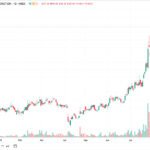From a legal perspective, it is clear that Tesla’s marketing and deployment of its Autopilot and Full Self-Driving systems have contributed to drivers misusing the technology. This has led to an increase in crashes involving these systems, resulting in legal actions against the company.
The recent trial in Florida, where Tesla was found partially responsible for a fatal crash involving Autopilot, has set a precedent for future lawsuits. The plaintiffs were able to show that Tesla’s claims about its ADAS systems were misleading and that the company bears some responsibility for the accidents.
The ongoing legal battles, such as the Maldonado v. Tesla case, further highlight the issues with Tesla’s self-driving technology. Testimonies from Tesla executives and engineers contradicting Elon Musk’s public statements about Autopilot could have significant implications for future cases.
From a business standpoint, Tesla’s self-driving efforts have been criticized for being more of a liability than a value creator. The company’s misleading marketing tactics have led consumers and investors to believe that its vehicles are capable of full autonomy, which is not the case.
It is clear that Tesla needs to address these issues and prioritize the safety of its drivers and passengers. The legal actions against the company serve as a wake-up call for the need for transparency and accountability in the development and deployment of autonomous driving technology. Tesla is facing a significant liability issue due to misrepresenting their cars’ capabilities in terms of self-driving technology. In a recent courtroom appearance, Tesla claimed that their cars only have driver assistance features, contradicting their previous statements that the vehicles have all the hardware necessary for unsupervised self-driving.
This discrepancy has created a dilemma for Tesla, as they now face potential lawsuits from customers who believed their cars were capable of unsupervised self-driving. The liability in accidents involving these misrepresentations could amount to tens of billions of dollars, posing a significant financial risk for the company.
From a business perspective, Tesla’s premature claims about their self-driving capabilities may have seemed advantageous in the race for autonomy technology. However, the reality is that Tesla is still far from achieving unsupervised self-driving at scale, while the liability continues to mount.
It is essential for Tesla to address these misrepresentations and clarify the actual capabilities of their vehicles to avoid further legal issues and protect their reputation. As the company navigates through this liability challenge, transparency and honesty will be crucial in maintaining trust with customers and stakeholders.
In conclusion, Tesla’s misrepresentation of their self-driving technology has not only created a significant liability issue but also raised questions about the company’s credibility and transparency. Moving forward, Tesla must address these concerns and ensure that their claims align with the actual capabilities of their vehicles to avoid further legal and financial repercussions.







